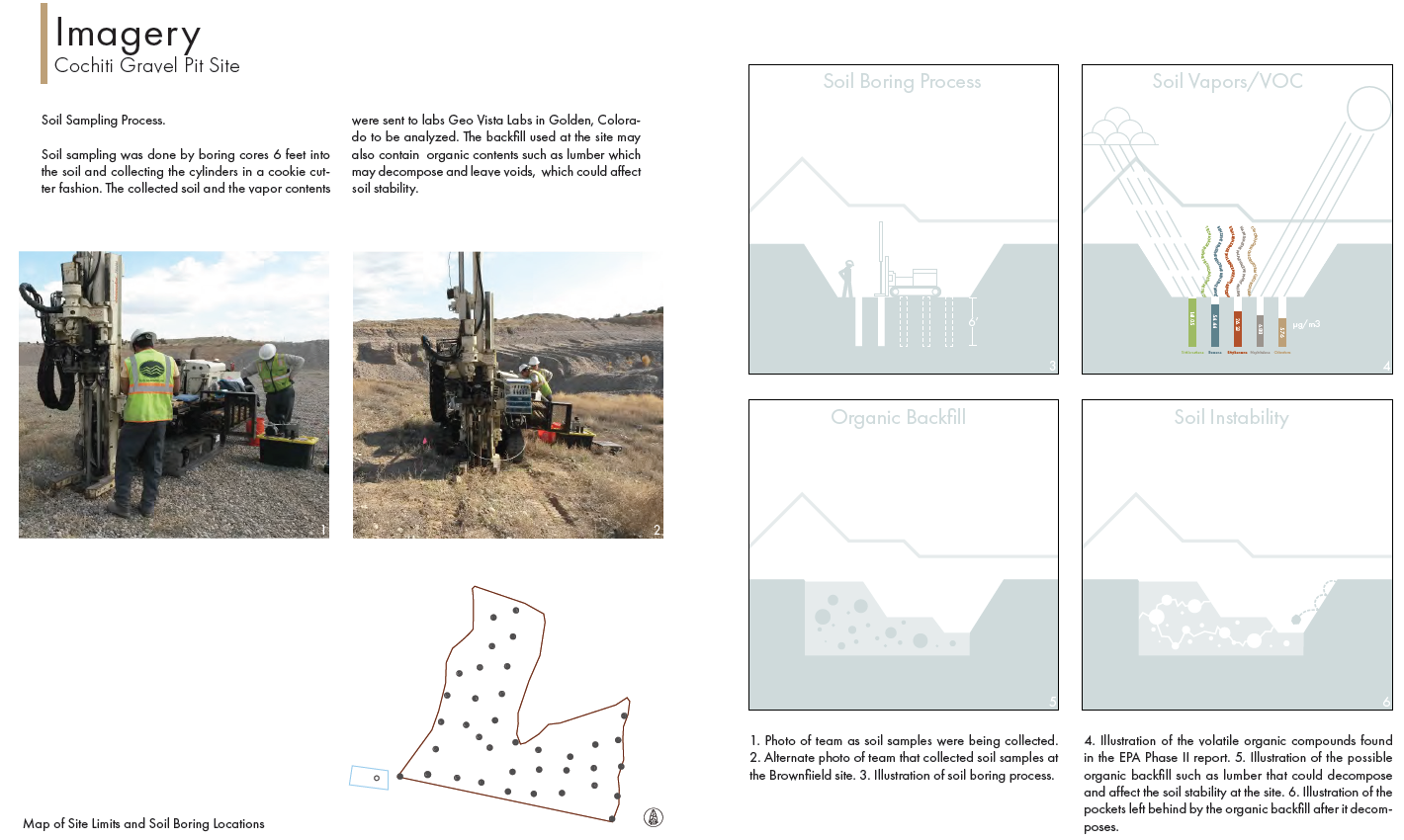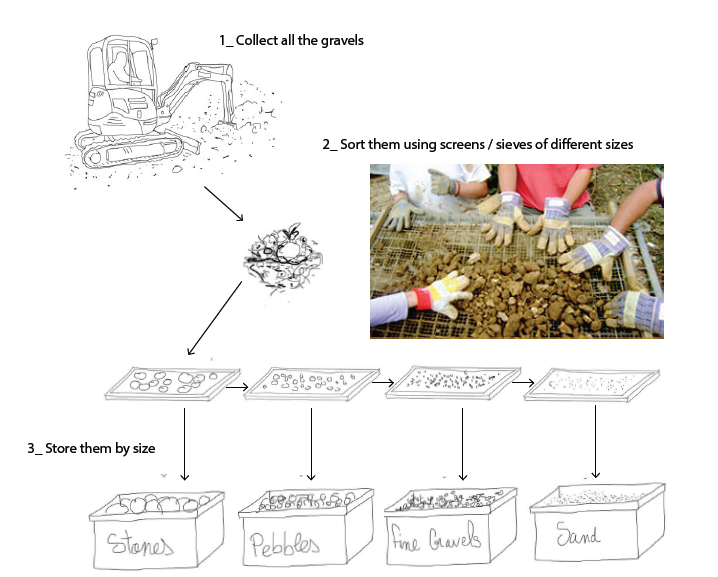Designing new life for a Gravel Pit in Cochiti Pueblo
Student Blythe Mann standing at a high point in the gravel pit
Our principal, Elizabeth Suina, uses her skills and unique perspective in many ways including teaching at the University of New Mexico. As an adjunct professor she has led students in studios such as one where she along with another instructor Francisco Uviña-Contreras, Director of the Historic Preservation + Regionalism Certificate Program at UNM, where a group of architecture students helped create designs for Zuni main street in Zuni Pueblo. For more info on this project click here or see our past post about the project here.
In the Spring Semester of 2019 Elizabeth Suina led an undergraduate architecture studio at the University of New Mexico. The goal of this studio was to create a new vision for a brownfields site located in Cochiti Pueblo. A brownfields site is defined by the EPA as, “the expansion, redevelopment, or reuse (of a site) of which may be complicated by the presence or potential presence of a hazardous substance, pollutant, or contaminant.” (EPA.GOV) The brownfields site in question is a gravel pit mine on the edge of the Cochiti reservation near the small town of Peña Blanca which was active between 2009 and 2014. The former mine is 13 acres in area and over 30 ft deep at points. The steep embankments of the mine are a safety hazard because while the mine has a fence, it is often vandalized, and trespassing is common. The site was over mined much past the contracted 5-acre boundary, and it was also revealed that construction waste was illegally buried in parts of the site that were over mined. The construction waste back fill was a unique challenge because it was unknown what potentially hazardous materials could remain buried there, these unknown contaminants in addition to leaking oil from mining equipment made the gravel pit a brownfields site in need of remediation.
“When I first saw the site, I was overwhelmed. Even though I had seen pictures, it was impressive. I thought someone has no respect for the Earth. What I want to know is,Why would the tribe let anyone dig like this?” - UNM Student Antonio Rael
The UNM School of Architecture and Planning studio consisted of 11 students from varying backgrounds that were all tasked with creating a design response to the gravel pit site. The studio worked with the Indigenous Design and Planning Institute at UNM (ID+PI), the Eight Northern Indian Pueblos Council, High Water Mark LLC, and representatives from Cochiti Pueblo. Aspects of the project included intensive research, soil data analysis, site visits, community engagement, planning and architectural design. Students spent a large portion of the studio doing in depth site analysis for the complicated conditions that exist at the gravel pit which included reading through EPA reports on soil contamination and representing the findings in a clear and concise manner that the average person can understand. During the community engagement portion of the project students gathered opinions from meetings with Cochiti Pueblo employees and tribal members, as well as residents from Peña Blanca. Finally, after compiling all the data the 11 students created proposals for possible design solutions. These proposals included an outdoor market space, a drive-in theater, a recreational area, a grocery store, a farmer’s market, a vertical indoor farming facility, and a nature preserve. The proposals included cost estimates for feasibility. The studio was also given the very unique opportunity of having a visiting professional and acclaimed landscape architect Julie Bargmann of D.I.R.T. Studio accompany the class on a site visit and give a lecture on brownfields site remediation, an area she has professional expertise in from acclaimed projects her studio has completed like the the remediation of Chicago’s first limestone quarry into the Stearns Quarry Park. The project has reached beyond just UNM and Cochiti, serving as a precedent for others when Elizabeth presented the final document from ARCH 402 Brownfield Studio at this years AICAE (American Indian Council of Architects and Engineers) conference held on September 23, 2019 at the Isleta Resort + Casino.
“Scarred by transgressions of those who would re purpose sacred spaces for advantageous personal use, Cochiti Pueblo has the chance to renovate and reuse the gravel pit and restore the area to represent and manifest the values and principles the community holds highest.” - UNM Student Jade Sheridan Moore
The result of the studio was a 193-page document that Cochiti Pueblo can now use to address the possibilities of the site, as well as other gravel mines on the pueblo. The proposals also offer options for economic development that may be suited for other areas on the pueblo as well. Through the design process the studio focused on engaging the community and tried to increase visibility of environmental issues relating to gravel mining as well as economic development in Native American communities. All of those involved in the project were able to see the inspirational power of design. A site that once just represented the damage that can be done for economic gain can now be seen in a new light, one that has opportunity and where nature can begin to reclaim what once was.
















